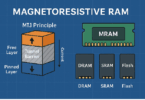According to the researchers at the University of Twente and the Eindhoven University of Technology, they have developed an unparalleled secure way of authenticating Fraud-Proofing Credit Cards Through Quantum Physics, biometrics, IDs, and all the parties involved in the quantum cryptography.
Fraud-Proofing Credit Cards Through Quantum Physics
The method of quantum-secure authentication of the optical keys mainly consists of a process of sending out a beam of light at the cards, which have been treated with a special kind of paint and then the reflection of the card is used for the authentication mechanism.
In simple terms, the method involves using coherent states of light comprising of a low mean photon number, which have the ability to bounce around due to increased space. Since the photons have the ability to be present at different place at any time, the card reflecting the beam of light will lead to generation of lots of dot of lights when compared to the number of photons, making it difficult for the attackers to get the entire card pattern measured up.
The researchers have claimed that this method can be implemented with the current technology and it does not rely on any secret stored data. According to Rob Enderle, principal analyst at the Enderle Group, even though we were aware about the security issues linked with the magnetic card readers since a decade, they still have not been removed. He further added that this might become a hindrance when installing the new technology.
Research Details
In this research, the researchers used a card, which was coated with a white paint consisting of millions of nanoparticles that have the feature of bouncing the incoming light. The team used two SLM (spatial light modulators), a photon detector, and a pinhole. These modulators were meant for acting as challengers and responders. At present, each of the challenge-response pair requires 20 KB of memory and 50-MB database to hold 2,500 pairs.
Pros and cons of the system
The database of the challenge and response can be hacked however; the key will not be reproducible digitally thereby making the entire task useless for the hackers. Making physical copy of the database is difficult due to the presence of too many particles and the need of accuracy. It is not easy for the hackers to cycle through the challenge-response pairs and generates the response as security lies in the light photons of the key and not with the challenge response.
Nothing is impossible
According to research leader Pepijn Pinske, hackers can break into the system by using the passive linear optical system, which can automatically transform any kind of challenge into response. This is same as making a physical copy of the key. He added that an un-clonable key can easily be stolen and there is no solution for that.
He stated that they have added security at different levels making it difficult for hackers to get access to the system. Using QSA with biometrics make it difficult for people to use stolen cards and track geo-location. It can help useful for government and military, as they have to give high priority to security.






